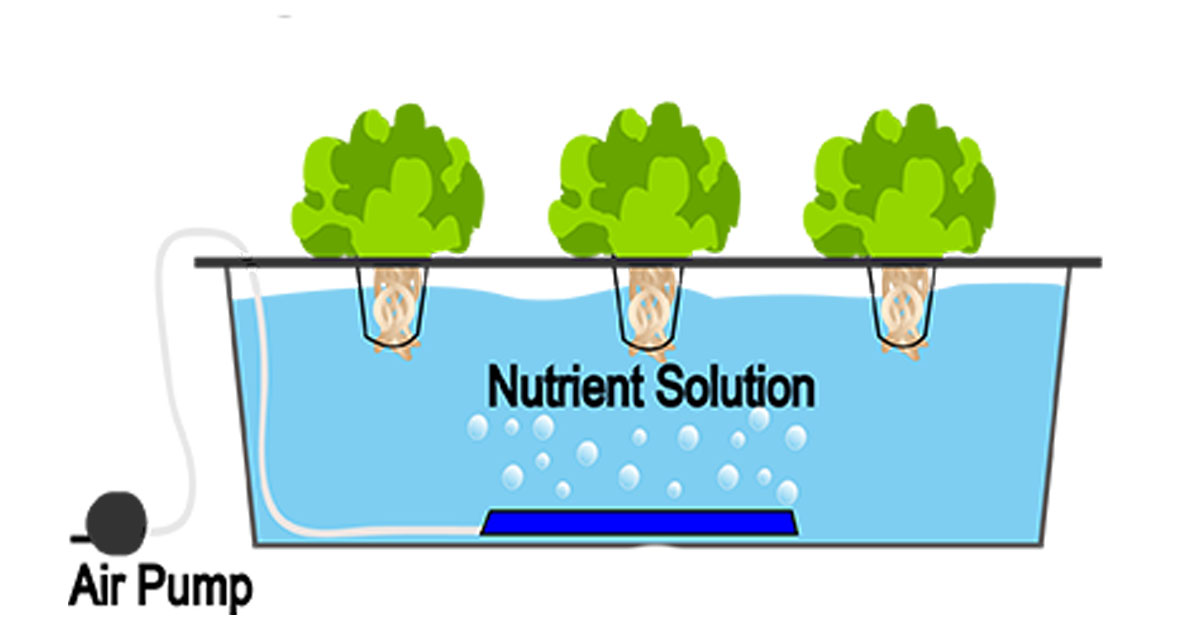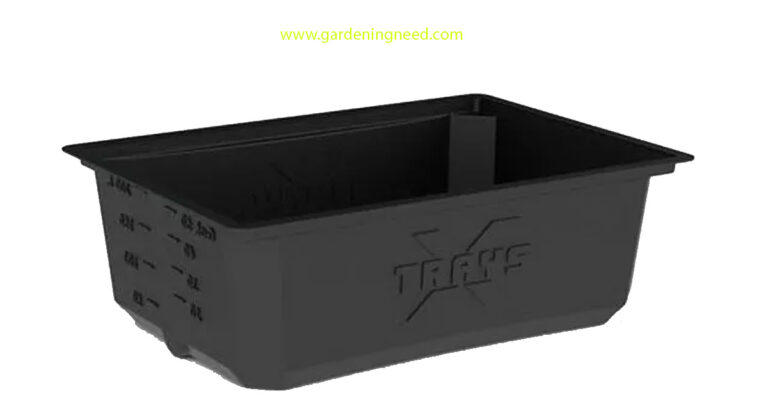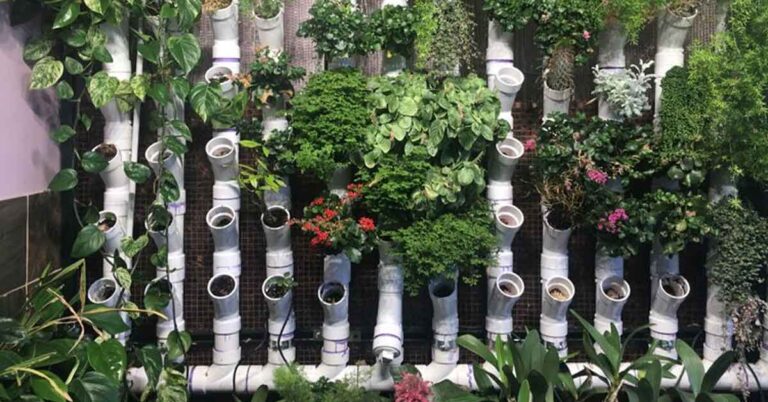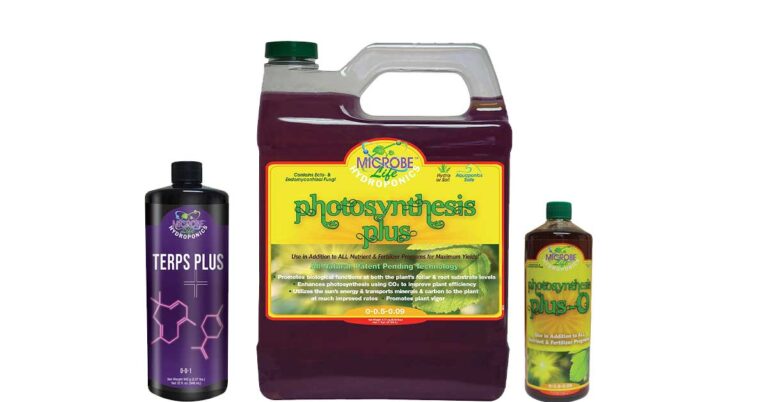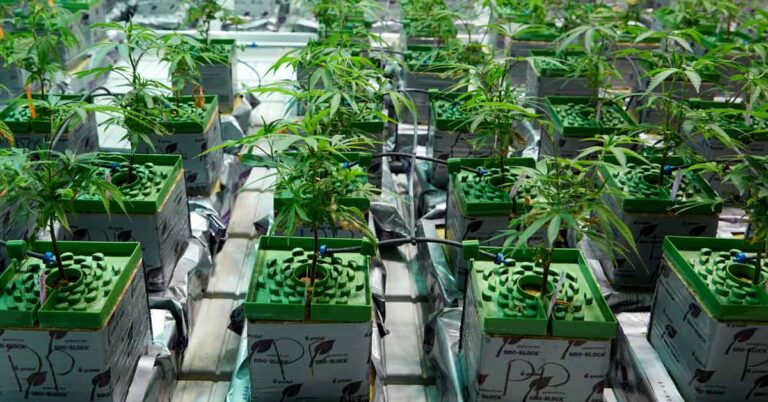Perfect Your Hydroponics Water Level For Net Pots
Hydroponics, a revolutionary approach to agriculture, eliminates the need for soil by growing plants in a nutrient rich water based solution. A critical component to this method is maintaining the correct water level, especially when using net pots.
The ‘hydroponics water level for net pots is a vital aspect that can significantly influence the growth, health, and yield of the plants. This article will delve into the understanding of this crucial element and how to optimize it for a successful hydroponic cultivation.
Maintaining the optimal water level for net pots is crucial for achieving successful hydroponic growth. Hydroponics, a soil free method of growing plants, relies heavily on precise nutrient and water management.
By perfecting the water level in net pots, growers ensure their plants receive the right amount of hydration and nutrients, which is essential for robust growth and high yields.
An ideal water level supports the development of a strong root system, preventing both under watering and overwatering. Under watering can lead to nutrient deficiencies and stunted plant growth, while overwatering can cause root rot and other diseases.
Striking the right balance is key to a thriving hydroponic setup and understanding how to manage this aspect effectively can significantly impact overall plant health and productivity.
For hydroponic enthusiasts and professionals alike, mastering the art of adjusting water levels in net pots can make a substantial difference in crop success. With the right approach, growers can ensure their hydroponic systems are efficient and their plants are healthy, ultimately leading to a bountiful harvest.
Types of Hydroponics Systems
There are eight main types of hydroponics systems, each with unique characteristics and requirements:
1. Deep Water Culture (DWC)
Deep Water Culture is a popular hydroponic system where plant roots are suspended in a nutrient rich oxygenated water solution. The roots are submerged in the water, allowing for rapid growth due to constant access to both nutrients and oxygen. This system is highly efficient for growing leafy greens and herbs.
2. Nutrient Film Technique (NFT)
In the Nutrient Film Technique, a thin film of nutrient rich water continuously flows over the plant roots, which are supported in a sloped channel. This method ensures a steady supply of nutrients and oxygen, promoting robust plant growth. NFT is particularly effective for fast growing crops.
3. Ebb and Flow (Flood and Drain)
The Ebb and Flow system periodically floods the plant roots with nutrient solution and then drains it away. This cycle provides plants with essential nutrients while allowing for aeration during the drainage phase. It’s versatile and can be used for a variety of crops, including vegetables and herbs.
4. Wick System
The Wick system utilizes a wick to draw nutrient solution from a reservoir up to the plant roots. This passive system requires no pumps and is ideal for small scale hydroponics setups. It works well for plants with lower nutrient and water needs, such as herbs and small vegetables.
5. Drip System
A Drip System delivers nutrient solution directly to the plant roots through drip emitters. This method allows for precise control over nutrient delivery and water consumption. It is highly customizable and suitable for a wide range of plants, from leafy greens to larger fruiting vegetables.
6. Aeroponics
Aeroponics involves suspending plant roots in the air and misting them with a nutrient rich solution. This system maximizes oxygen availability and nutrient absorption, promoting rapid growth and high yields. Aeroponics is often used for high value crops and research applications.
7. Vertical Hydroponics
Vertical Hydroponics employs vertical structures to grow plants in stacked layers or columns. This space saving technique maximizes growing area and can be combined with various hydroponic systems, such as nutrient film or drip. It’s ideal for urban environments and high density farming.
8. Flooded Tube System
The Flooded Tube System involves growing plants in long tubes that are periodically flooded with nutrient solution. The tubes are usually arranged horizontally or vertically, and the system is designed for efficient water and nutrient use. It is suitable for small to medium sized crops and can be adapted to various growing environments.
How to Choose the Right One
Choosing the right hydroponic system is crucial for successful indoor gardening. Here are key factors to consider when selecting the best system for your needs:
1. Consider Your Space and Goals
Evaluate the space available for your hydroponic setup, whether it’s a small apartment balcony or a dedicated indoor grow room. Different systems vary in size and complexity, so choose one that fits your space and aligns with your gardening goals, whether it’s growing herbs for personal use or cultivating a variety of vegetables for commercial purposes.
2. Assess Water and Nutrient Management
Each hydroponic system manages water and nutrient delivery differently. Consider your comfort level with monitoring and adjusting nutrient levels, as some systems require more hands-on management than others. Systems like Deep Water Culture (DWC) and Nutrient Film Technique (NFT) offer efficient nutrient delivery but require regular monitoring, while passive systems like Wick and Flooded Tube systems are easier to maintain.
3. Understand Plant Needs
Different plants have varying nutrient requirements and growth habits. Choose a system that supports the specific plants you intend to grow. For example, leafy greens thrive in systems like NFT or Deep Water Culture, while larger plants like tomatoes may require systems with more structural support, such as Vertical Hydroponics or Drip Systems.
4. Consider Your Experience Level
Your experience with hydroponics and gardening in general should influence your choice of system. Beginners might find systems like Wick or Deep Water Culture easier to start with due to their simplicity, while experienced growers may prefer the precision and flexibility offered by systems like Aeroponics or Drip Systems.
By carefully considering these factors, space availability, water and nutrient management, plant needs and your own experience level you can choose the hydroponic system that best suits your indoor gardening goals and ensures successful plant growth. Each system offers unique advantages, so selecting the right one ensures a rewarding and productive gardening experience.
Setting Up a Net Pot with Proper Water Levels
Setting up a net pot with proper water levels is crucial for optimal plant growth in hydroponic systems. Begin by selecting the appropriate size of net pot for your plants. The net pot should be large enough to accommodate the root system and provide ample space for growth. It is essential to use high quality net pots made of materials that allow for excellent drainage and aeration.
Once you have your net pot, fill it with an inert growing medium such as clay pellets, rock wool or perlite. The medium supports the plant and anchors the roots while allowing excess water to drain away. Carefully place the seedlings or seeds into the net pot, ensuring that they are positioned correctly and that the growing medium is evenly distributed around them.
Next, position the net pot in the hydroponic system so that the water level is at the correct height. The water level should be high enough to keep the lower part of the plant’s root system submerged, but not so high that it saturates the growing medium excessively. This balance helps to prevent root rot and ensures that the plant receives an adequate supply of nutrients and oxygen.
Regularly monitor and adjust the water level as needed to maintain the ideal conditions for your plants. This involves checking the water level frequently and making adjustments based on plant growth and environmental factors.
By setting up and maintaining proper water levels in net pots, growers can ensure healthier plants, improved nutrient uptake and ultimately, a more successful hydroponic growing experience.
Perfect Your Hydroponics Water Level For Net Pots
Achieving the ideal water level in net pots is essential for optimizing plant health and growth in hydroponic systems. Proper water management ensures that plants receive adequate hydration and nutrient uptake without risking root suffocation or nutrient imbalances. Here’s how to perfect your hydroponics water level for net pots:
Understanding Optimal Water Levels
Maintaining the right water level is crucial in hydroponics. For net pots, the water should ideally submerge the lower portion of the roots while allowing the upper roots to access oxygen. This balance prevents issues such as root rot from overwatering or nutrient deficiency from under watering. Monitoring and adjusting the water level regularly based on plant growth and environmental conditions are key practices for successful hydroponic gardening.
Methods for Adjusting Water Levels
Adjusting the water level involves careful monitoring and responding to plant needs. Techniques like Ebb and Flow systems periodically flood and drain nutrient solution, ensuring roots receive sufficient oxygen during drainage phases. Alternatively, Drip Systems deliver precise amounts of water directly to roots, minimizing waste and maintaining consistent hydration. Each method offers unique advantages, allowing growers to tailor their approach based on plant type and system setup.
Benefits of Proper Water Level Management
Effective water level management promotes robust root development and enhances nutrient absorption, leading to healthier plants and increased yields. By preventing water related stressors, growers can maintain optimal growing conditions throughout the plant’s life cycle. This proactive approach not only supports plant health but also contributes to overall system efficiency and sustainability in hydroponic farming.
Reasons Why You Should Monitor Your Hydroponic System’s Water Levels
Monitoring your hydroponic system’s water levels is crucial for several reasons:
- Optimal plant growth: Plants need an ideal balance of nutrients, water, and oxygen for growth. Regular monitoring allows for timely adjustments to maintain this balance and promote healthy development.
- Prevent root rot: Overwatering can lead to root rot, a harmful condition that can rapidly damage and even kill your plants. By keeping an eye on the water levels, you can prevent the roots from becoming too saturated.
- Detection of leaks: If you notice a sudden drop in your system’s water levels, it could indicate a leak. Early detection and repair can save your system from potential damage.
- Efficient use of nutrients: Overfilling your system wastes nutrient-rich water. By monitoring and adjusting the water levels, you can ensure efficient use of your nutrients, saving on costs over time.
- Preparation for system expansion: Regular checks on the water levels provide valuable data that can help you plan for future additions to your hydroponic system.
In conclusion, effective monitoring of your hydroponic system’s water levels is a vital practice in ensuring plant health, system longevity, and overall gardening success.
Tips and Tricks to Achieve Optimal Water Levels
In achieving optimal water levels for your net pot, here are some helpful tips and tricks:
- Use a Water Level Indicator: A water level indicator can be a simple yet invaluable tool in your hydroponic setup. It allows you to easily check the water level without the need to open or dismantle any part of your system.
- Adjust According to Plant Size: As your plants grow, their water consumption will increase. Be prepared to adjust the water level accordingly to keep up with your plant’s needs.
- Regular Monitoring: Regularly check the water level in your net pots. This allows you to spot any drastic changes in water level that could indicate a problem, such as a leak or overwatering.
- Maintain Optimal Temperature: Keep the temperature of your nutrient solution between 65°-75°F (18°-24°C). A higher temperature can lead to faster evaporation, affecting the water level, while also increasing the risk of root diseases.
- Consider an Automatic Refill System: If you have a large hydroponic setup or are unable to check the water levels daily, consider installing an automatic refill system. This system refills the reservoir when the water level drops to a certain point, ensuring constant water availability for your plants.
Conclusion
Achieving mastery in perfecting the water level for net pots in hydroponics is not just about maintaining a balance. It’s about nurturing thriving plants and optimizing yields. By fine tuning water levels, growers can mitigate common challenges like nutrient deficiencies and root diseases, ensuring plants receive the precise hydration needed for vigorous growth.
Consistency and attention to detail are key. Regular monitoring and adjustment of water levels based on plant needs and environmental conditions can lead to healthier, more resilient crops. Each adjustment made reflects a deeper understanding of the delicate balance between water, nutrients and plant health in hydroponic systems.
Ultimately, mastering water levels for net pots in hydroponics isn’t just a skill, it’s a cornerstone of successful cultivation. With dedication and a proactive approach to water management, growers can unlock the full potential of their hydroponic setups, fostering robust plants and reaping the rewards of a productive harvest.

